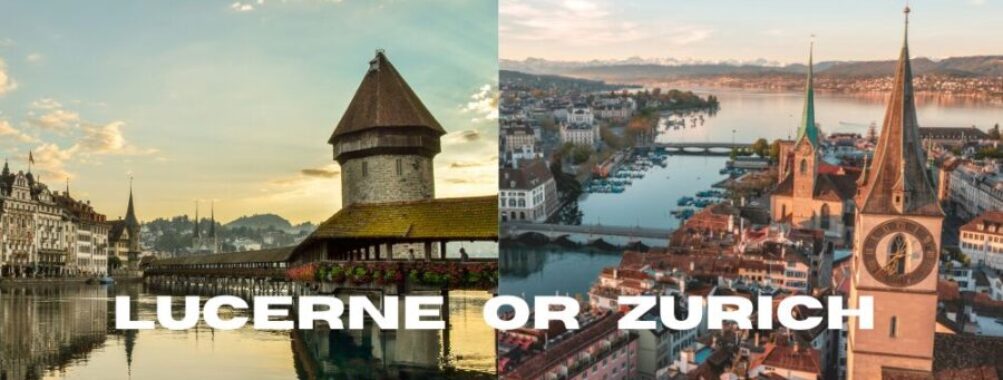
Lucerne vs Zurich: Which Swiss City Offers the Ultimate Cultural Experience in 2025
Switzerland‘s two most popular cities offer vastly different experiences for travelers. Zurich buzzes with big-city energy, while Lucerne charms visitors with its small-town appeal and mountain views. Most tourists prefer Lucerne thanks to its central location, lower costs, and easier access to Switzerland’s top attractions.
Both cities sit on gorgeous lakes with well-preserved medieval old towns at their hearts. Zurich excels as Switzerland’s largest city with more dining choices, shopping, and nightlife. Lucerne wins travelers over with its iconic wooden Chapel Bridge, stunning Alpine scenery, and more relaxed pace.
The hour-long train ride between these cities makes it simple to visit both. Many travelers choose to stay in the more affordable Lucerne while taking day trips to Zurich. The direct rail connection from Zurich’s airport to Lucerne takes just 75 minutes, perfect for international arrivals and departures.
Table of Contents
- Geographical Overview and Accessibility
- Location in Switzerland
- Airport and Train Connectivity
- Historical Significance and Culture
- Lucerne’s Rich History
- Zurich’s Historical Importance
- Natural Landscapes and Outdoor Activities
- Lake Lucerne and Surrounding Mountains
- Lake Zurich and nearby Uetliberg Mountain
- Urban Life and Attractions
- Shopping and Dining in Zurich
- Cultural Experiences in Lucerne
- Nightlife and Entertainment
- Accommodation and Budget
- Hotels and Alternative Stays
- Travel Costs Comparison
- Best Time to Visit and Seasonal Offerings
- Frequently Asked Questions
- What unique attractions differentiate Lucerne from Zurich for travelers?
- Which city serves as a more convenient travel hub for exploring Switzerland, Lucerne or Zurich?
- How do the cultural experiences in Zurich compare to those in Lucerne?
- Are there any scenic rail routes connecting Zurich to Lucerne and their level of visual appeal?
- What are the top reasons visitors choose Lucerne over other Swiss cities?
- How do Lucerne and Zurich’s culinary scenes differ in terms of local cuisine and dining options?
- Book Your Dream Experience
- More Travel Guides
Geographical Overview and Accessibility
Both Zurich and Lucerne offer excellent transport links and strategic locations within Switzerland, making them perfect bases for exploring the country. Each city’s geography shapes its unique character and travel possibilities.
Location in Switzerland
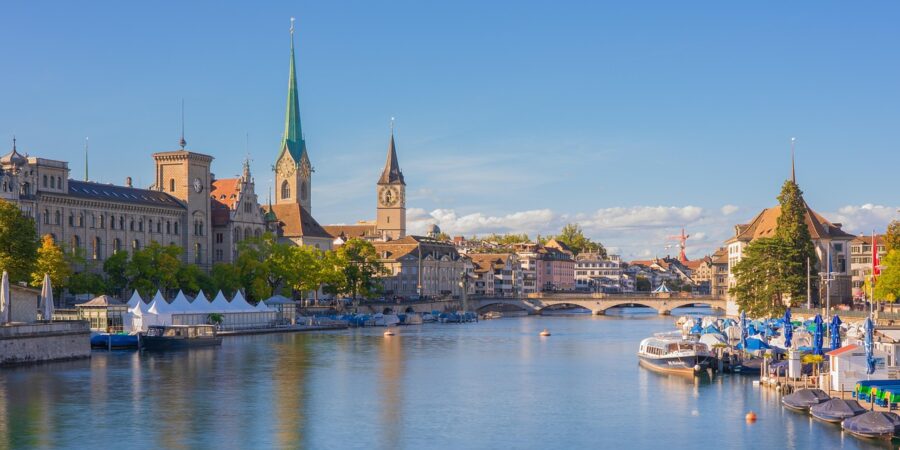
Zurich sits in the northern part of Switzerland, nestled between gentle hills along Lake Zurich. The city spreads across both sides of the Limmat River, with the main business district on the west bank. Its position makes it an ideal gateway to eastern Switzerland and neighboring countries.
Lucerne occupies a prime spot in central Switzerland at the northwestern tip of Lake Lucerne. The city is surrounded by mountains like Mount Pilatus and Rigi, creating a stunning backdrop. Its central location puts many popular Swiss destinations within easy reach.
Airport and Train Connectivity

Book your flights to Zurich Airport, Switzerland’s largest international hub. The airport handles most international arrivals and connects seamlessly to both cities.
Trains run from Zurich Airport to Zurich’s main station in just 10 minutes. The journey to Lucerne takes 1 hour and 15 minutes with direct trains.
Both cities have excellent train stations in their centers. Zurich’s main station is Switzerland’s largest, offering connections to all major Swiss cities and European destinations.
Lucerne’s railway station provides frequent services to popular mountain destinations like Mount Pilatus and Engelberg-Titlis. The station sits right next to the famous Chapel Bridge.
Public transport in both cities is efficient and extensive. Buses, trams, and boats connect all major attractions and neighborhoods.
Historical Significance and Culture
Both Lucerne and Zurich showcase Switzerland’s rich cultural heritage through their preserved medieval architecture, historic landmarks, and vibrant arts scenes. Each city tells a unique story of Switzerland’s past through its distinctive monuments and museums.
Lucerne’s Rich History
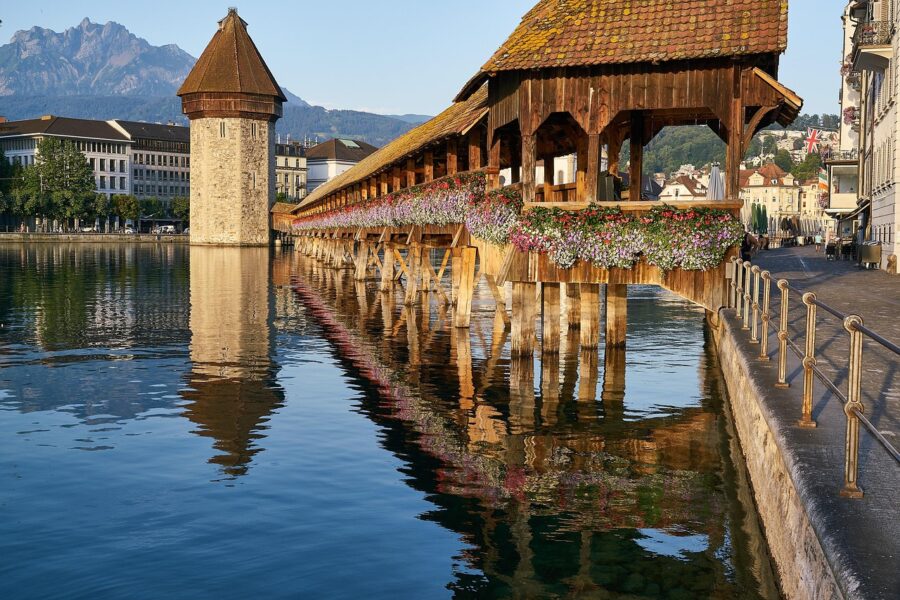
The stunning Chapel Bridge stands as Lucerne’s most famous landmark. Built in the 14th century, it’s Europe’s oldest covered wooden bridge and features historic paintings inside its roof beams. The medieval Old Town charms visitors with its decorated buildings and narrow cobblestone streets.
The somber Lion Monument, carved into natural rock, honors Swiss Guards who died in 1792. Locals call it “the saddest stone in the world.”
The Sammlung Rosengart museum houses an amazing collection of modern art, including works by Picasso and Klee. The Swiss Museum of Transport tells the story of Switzerland’s transportation evolution through interactive exhibits.
Zurich’s Historical Importance
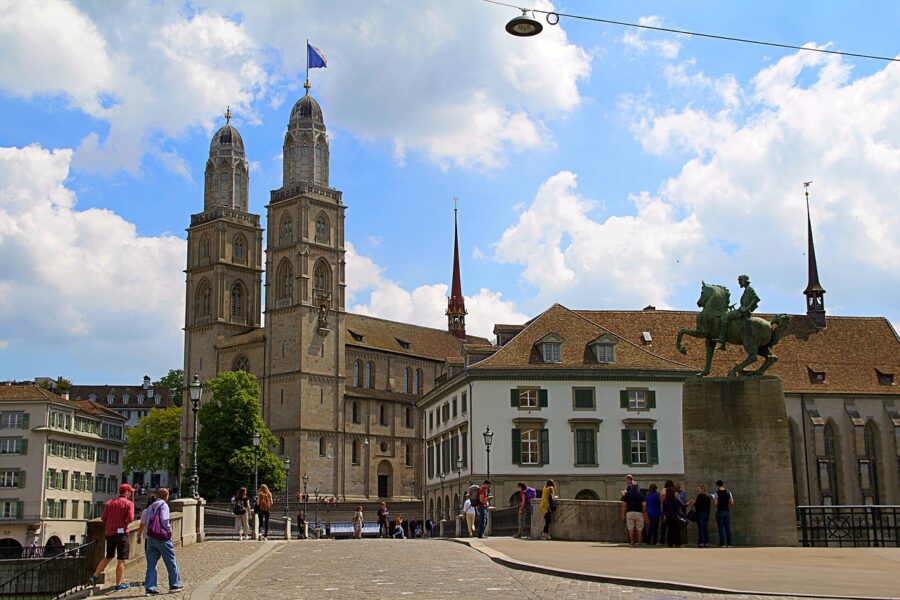
Zurich’s history dates back to Roman times. The iconic Grossmünster cathedral, with its twin towers, played a key role in the Protestant Reformation during the 16th century.
The Swiss National Museum lives in a fairy-tale castle building. It displays the largest collection of Swiss cultural history artifacts, from prehistoric times to modern day.
The Old Town spans both sides of the Limmat River. Its winding lanes hide guild houses, churches, and historic buildings that showcase the city’s medieval past.
Zurich’s banking history shaped modern Switzerland. The city became a global financial hub in the 19th century and maintains that status today.
Natural Landscapes and Outdoor Activities
Both Swiss cities offer stunning mountain views and scenic lakes perfect for outdoor adventures. Natural beauty surrounds these destinations with endless options for hiking, water sports, and mountain excursions.
Lake Lucerne and Surrounding Mountains

Lake Lucerne sparkles at the foot of towering Alpine peaks. The pristine waters stretch for 24 miles through four arms that create a cross-shaped lake perfect for boat trips and swimming in summer.
Mount Pilatus looms above the city at 6,982 feet, offering year-round cable car rides to its summit. Visitors can hike extensive trail networks or ride Switzerland’s steepest cogwheel train up the mountainside.
Mount Rigi, known as the “Queen of Mountains,” provides sweeping views of the Alps and lake. The extensive hiking trails range from easy walks to challenging climbs. In winter, skiing and sledding take over the slopes.
Lake Zurich and nearby Uetliberg Mountain

Lake Zurich creates a stunning backdrop for Switzerland’s largest city. The crystal-clear waters invite swimming, sailing, and paddleboarding during warm months.
Uetliberg Mountain rises 2,858 feet above sea level just outside Zurich. The peak offers breathtaking panoramic views across the city, lake, and distant Alps.
Well-marked hiking and mountain biking trails crisscross Uetliberg’s slopes. The Planet Trail teaches visitors about astronomy while they walk the ridge path between Uetliberg and Felsenegg.
Families love sledding down Uetliberg’s gentle slopes in winter. The mountain stays accessible year-round via train from Zurich’s main station.
Urban Life and Attractions
Both Zurich and Lucerne offer distinct urban experiences that blend modern life with historic charm. Zurich shines with its upscale shopping and vibrant nightlife, while Lucerne captivates with its medieval architecture and cultural landmarks.
Shopping and Dining in Zurich

Bahnhofstrasse stands as Zurich’s premier shopping street, lined with luxury boutiques and Swiss watch stores. The street stretches from the main train station to Lake Zurich, making it perfect for a scenic shopping stroll.
The historic Niederdorf quarter offers a different shopping feel with small specialty shops, antique stores, and local crafts. Its winding cobblestone streets hide many unique finds.
Food lovers will find plenty to enjoy in Zurich’s dining scene. The city mixes traditional Swiss restaurants with modern eateries. Many spots serve classic fondue and raclette dishes.
The Lindt Home of Chocolate museum adds a sweet touch to shopping adventures. Visitors can watch chocolate-making demonstrations and sample fresh treats.
Cultural Experiences in Lucerne
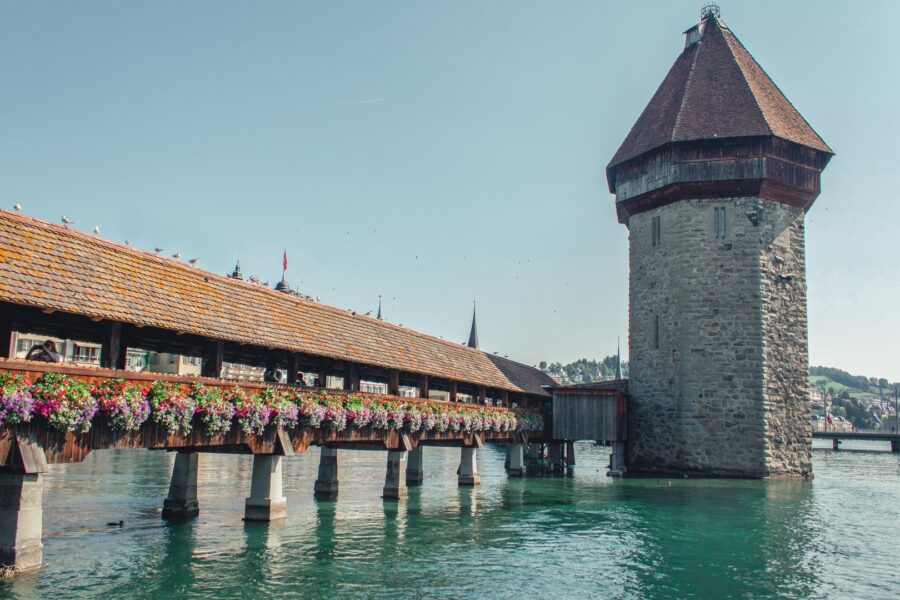
The Chapel Bridge and Water Tower form the heart of Lucerne’s cultural landscape. These medieval structures tell stories of the city’s rich past through their painted panels.
The Old Town features beautifully preserved buildings with painted facades. Street musicians often perform here, adding to the magical atmosphere.
Art enthusiasts appreciate the Kunsthaus Lucerne, which showcases both Swiss and international artworks. The museum hosts regular special exhibitions throughout the year.
Nightlife and Entertainment
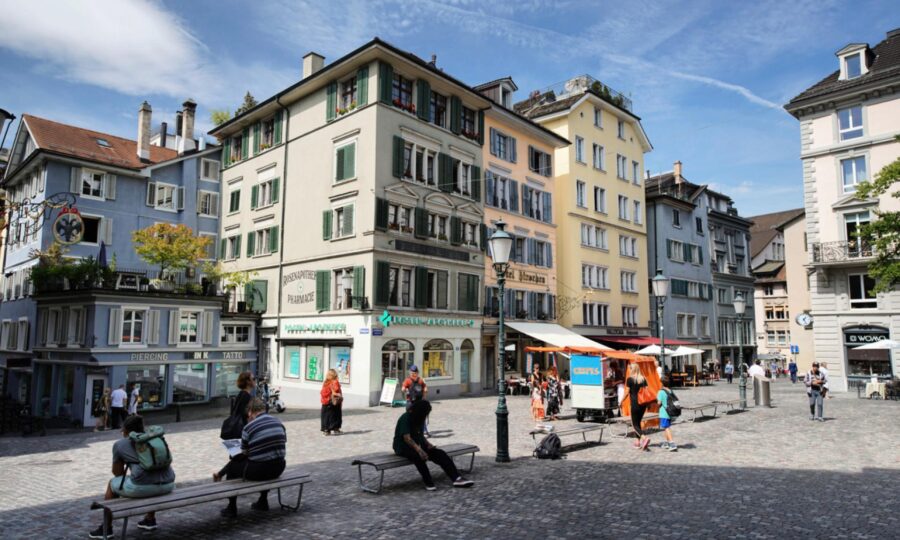
Zurich’s nightlife centers around the Langstrasse district. This area buzzes with bars, clubs, and live music venues that stay open late into the night.
Live music thrives in both cities. Zurich offers more variety with jazz clubs, rock venues, and electronic music spots. Lucerne hosts classical concerts at the KKL concert hall.
The Niederdorf transforms at night into a lively entertainment zone. Street performers, casual bars, and restaurants create a fun atmosphere for evening walks.
Dance clubs in Zurich range from small intimate spots to large venues with international DJs. Most clubs stay open until early morning hours.
Accommodation and Budget
Zurich’s higher accommodation costs reflect its status as Switzerland’s financial hub, with prices about 25% more than Lucerne across all lodging types. Daily travel expenses in Zurich average $200, while Lucerne costs closer to $160.
Hotels and Alternative Stays
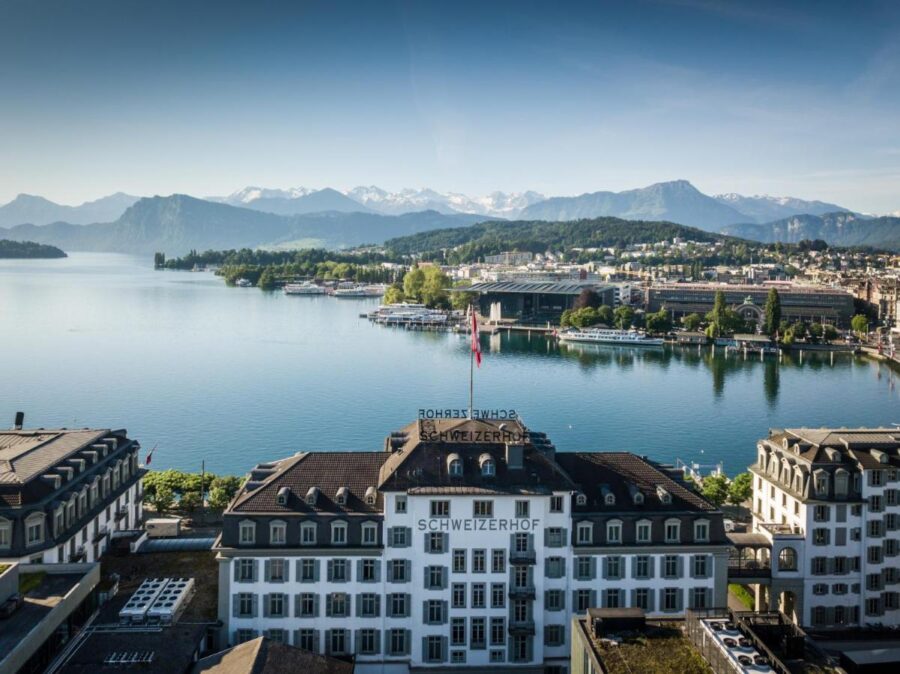
The Hotel Schweizerhof Luzern stands as a prime luxury option in Lucerne, sitting right on the lakefront. Lucerne offers a good mix of mid-range and budget-friendly places to stay within walking distance of major attractions.
Zurich packs in more hotel choices, especially in the luxury category. The city’s business focus means weekday rates often spike, but weekend deals can be found.
Both cities feature hostels and vacation rentals as cheaper alternatives to hotels. The neighborhoods around Lucerne’s train station provide the best value, while Zurich’s District 4 tends to be more budget-friendly.
Travel Costs Comparison

Food prices run about 15-20% higher in Zurich compared to Lucerne. A casual meal in Zurich costs around $25-30, while similar meals in Lucerne average $20-25.
Transportation costs less in Lucerne due to its smaller size. Many attractions sit within walking distance of each other. Zurich requires more use of public transit.
Shopping and entertainment also hit the wallet harder in Zurich. Museum entry fees average $5-10 more than in Lucerne. Souvenirs and local goods maintain lower price tags in Lucerne’s shops and markets.
Best Time to Visit and Seasonal Offerings
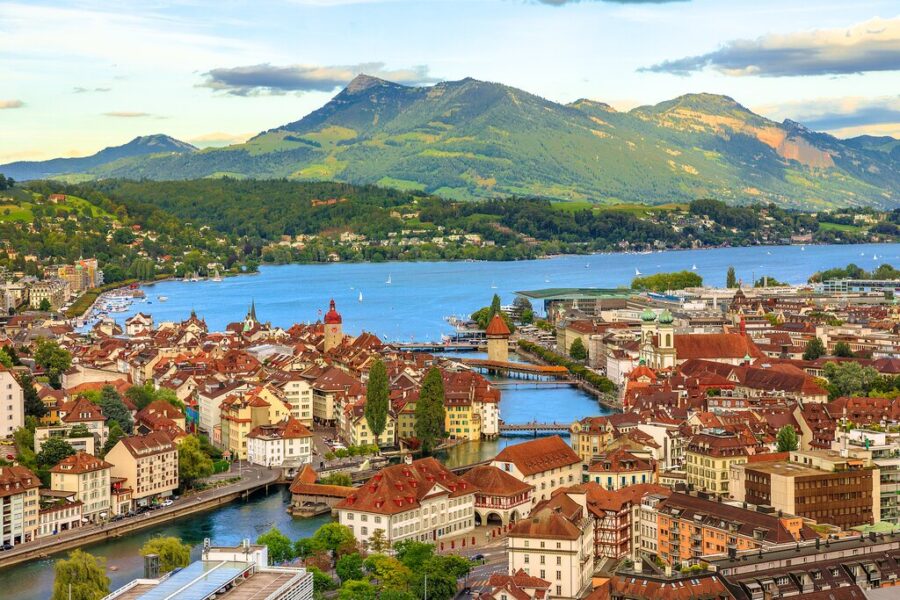
May, June, and September offer the most pleasant weather for visiting both Zurich and Lucerne. The temperatures are mild, perfect for exploring the cities’ lakes and outdoor attractions.
July and August bring peak tourist crowds to both cities. The lakes become busy with swimmers and boats, while cafes spill onto sunny sidewalks. Prices tend to be higher during these months.
Winter transforms both cities into festive wonderlands. Christmas markets pop up in December, filling streets with the scent of mulled wine and roasted chestnuts. Zurich’s markets are larger, spreading across multiple locations in the city center.
Spring and fall bring fewer tourists and lower prices. The Swiss Alps are visible on clear days, making these seasons great for photography. Lake activities may be limited during cooler months.
Best months for specific activities:
- Lake swimming: July-August
- Christmas markets: December
- Mountain views: May and October
- Outdoor dining: June-September
- Cheese fondue: October-March
Both cities experience rain year-round. Pack an umbrella no matter when you visit. Morning fog often blankets the lakes in fall, creating magical photo opportunities.
Frequently Asked Questions
Both Lucerne and Zurich offer unique experiences for travelers, from cultural sites to transportation links and dining choices. Each city brings something special to visitors exploring Switzerland.
What unique attractions differentiate Lucerne from Zurich for travelers?
Lucerne stands out with its medieval Chapel Bridge and Water Tower, which create a picture-perfect Old Town setting. The city’s smaller size makes it feel more intimate and charming.
Zurich boasts the grand Grossmünster cathedral and a lively waterfront along the Limmat River. The city’s larger scale supports more modern attractions, shopping districts, and art galleries.
Which city serves as a more convenient travel hub for exploring Switzerland, Lucerne or Zurich?
Zurich has the country’s largest airport and excellent rail connections to other European cities. The main train station offers direct routes to most Swiss destinations.
Lucerne sits 65km from Zurich Airport, adding about 2 hours to total travel time. Yet its central location makes it ideal for day trips to Mount Pilatus, Rigi, and other Alpine destinations.
How do the cultural experiences in Zurich compare to those in Lucerne?
Zurich’s cultural scene includes more museums, theaters, and music venues. Its bigger population supports a wider range of events and festivals throughout the year.
Lucerne hosts the famous summer Music Festival and maintains strong ties to Swiss folk traditions. The city’s smaller scale lets visitors experience local culture up close.
Are there any scenic rail routes connecting Zurich to Lucerne and their level of visual appeal?
The train ride between Zurich and Lucerne takes about 50 minutes through picturesque countryside. Passengers see rolling hills, farms, and distant mountain views.
The Golden Pass route from Lucerne offers stunning Alpine scenery. This iconic railway journey showcases Switzerland’s most beautiful landscapes.
What are the top reasons visitors choose Lucerne over other Swiss cities?
Lucerne’s lakeside setting with mountain views creates a stunning backdrop. The compact city center makes walking between attractions easy and enjoyable.
The mix of preserved medieval architecture and modern amenities draws tourists. Access to nearby mountains and Lake Lucerne activities adds outdoor appeal.
How do Lucerne and Zurich’s culinary scenes differ in terms of local cuisine and dining options?
Zurich offers more international restaurants and high-end dining choices. The city’s size supports diverse food scenes from street food to Michelin-starred establishments.
Lucerne focuses on traditional Swiss cuisine and lakeside dining experiences. Local specialties include fresh fish from Lake Lucerne and regional cheese dishes.



